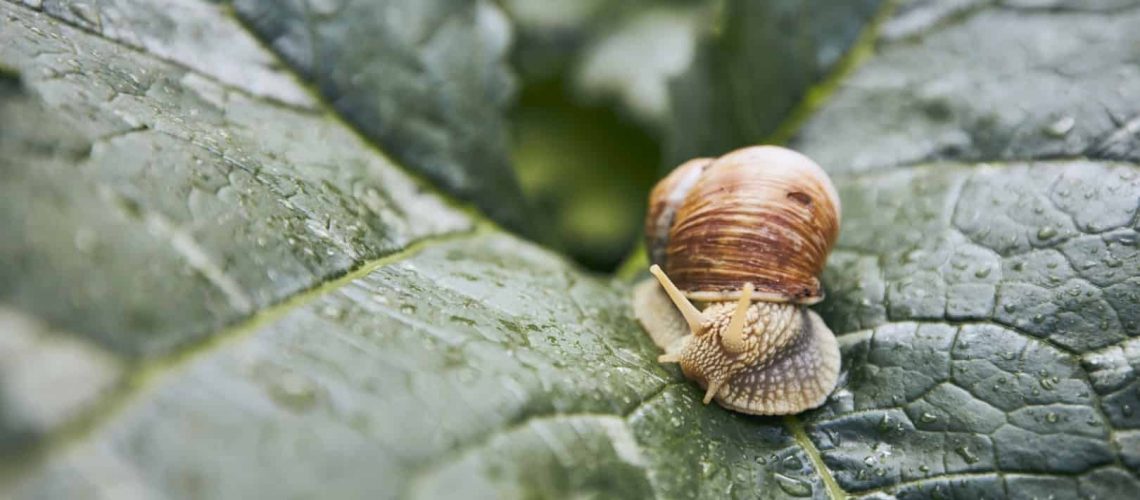It is a known truth that garden snails can last easily for years. But it’s yet to find that for how many years garden snails can live.
This article covers all you need to know about the lifespan of garden snails, including their average life expectancy and what you can do to prolong it. We also have some common queries regarding garden snail pets answered.
How Long Do Garden Snails Live?
Most garden snail species live for not more than 2 to 5 years, but there are some species that can survive for as long as 10 to 15 years with ease. It might seem odd to some people who know nothing about garden snails, but it is how long they can live.
If you are wondering how long the snails in your garden last or why they are dying so early, here is what you will come to know about these small species. Furthermore, can you keep them as a pet, and if yes, how should they be treated to stay in good health.

What Do Garden Snails Need To Live Long?
One of the questions that irritate most garden snail lovers is that what on earth they can do to make their pet garden snails live long? It is something quite easy yet very hard to practice. A garden snail needs a perfect living environment to survive for a longer period. If you are looking to have your garden snails for a longer period, below are a few tips.
· Ensure A Perfect Habitat
Snails are one of those species that cannot survive in small spaces. Therefore, to ensure a good habitat for your pet garden snails, it is essential to settle them into a large glass jar, and if the snail is big enough, then an old aquarium will work perfectly.
Afterward, add some soil and stones to make your pet comfortable. Then, place some fresh and dry leaves, and do not forget to close the jar with a lid with small holes. Without a lid, the snails will escape the container.
· Maintain Good Diet
Snails can be categorized as some of the luxurious pets to own. They need everything perfectly balanced, either it’s their habitat or their diet. Garden snails are mostly herbivorous and need daily fresh vegetables and fruit. To maintain a balanced diet for pet snails, it is essential to provide them with fresh vegetables or fruits. Moreover, you must never forget to remove the leftover of yesterday as snails prefer a clean environment. Lastly, it is essential to provide the snails with access water to keep them hydrated.
· Provide Regular Calcium
Something that a snail owner must not forget is the provision of regular calcium to snails. Calcium is as vital for snails as oxygen for men. It helps to solidify their shell. So, to help your snail live long, one must provide it with calcium from time to time. A cuttlefish bone will work perfectly for calcium provision.
Will all this care endure, a pet garden snail can live as long as five years, and some species will survive for more or less 15 years.
Can Garden Snails Be Kept As Pet?
There is no doubt about it that garden snails can easily be kept as a pet. These tiny species are some of the easiest creatures to be kept as a pet. While keeping a garden snail as a pet, they must be introduced with a normal-sized container, access water, abundance of food, good airflow, and enough calcium.
It must be kept in mind that snails can never survive without having proper calcium daily. Their shell is entire composed of calcium which protects them from outside hazards, ensuring their safety. With no calcium provided, snails will tend to lose their shell’s hardness, leaving them vulnerable to all threats. All in all, it is easy to keep a garden snail as a pet, but one must ensure the provision of the basic necessity to its pets.
Do Garden Snails Love To Be Petted?
It might sound weird, but garden snails love to be petted. Snails love when their shell is being rubbed, and they also like their head to be rubbed gently. Moreover, if you own a garden snail as a pet, it will love to have food while being in your hand, or it may also take a nap while staying in your hands. As a whole, snails love to be petted.
Why Do Garden Snails Leave Their Shell?
If garden snails have left their shell and carrying the shell around them, it means that they are looking for food while coming out of their shell. But, if you find an empty shell with no snail around it, this certainly means that the snail has died or has been killed by a predator. A shell is attached to a snail’s body, and they can never leave it until they die. So, if there is an empty shell with no snail around it, the snail has died for sure.
Can A Garden Snail Survive Without A Shell?
There is no possibility that a snail can survive without a shell, just like humans and some mammals cannot survive without their bones. A shell works like a snail protection unit and certainly provides structure to the snail, and without it, there is no chance of a snail’s survival. Their bodies are glued to the shell, and only a certain portion of their body can come out of the shell and not the whole body.
Ways To Eradicate Unwanted Garden Snails
If you are tired of unwanted garden snails, then a simple home remedy can do wonders for you. Crush some garlic to make a garlic solution, and spray it into your garden to repel or to kill the unwanted garden snails.
How To Know If A Garden Snail Is Dead?
Garden snails are sometimes the apple of discord for many garden owners. Although many people keep them as a pet, some consider them a threat to their garden’s beauty. But how would a person know if a garden snail is alive or dead? First, the thing that can differentiate between a living and a dead snail is its smell. A dead snail throws a very bad and unpleasant smell, unlike a living snail. Second, if one finds a snail without a shell or a snail with a completely crushed shell, the snail has died already.
Have Fun With Your Pet Garden Snails
Snails are not pet material, but people love to have garden snails as their pets. These tiny creatures usually do not even come out in the morning hours, yet they will provide an amazing look to your living room.

